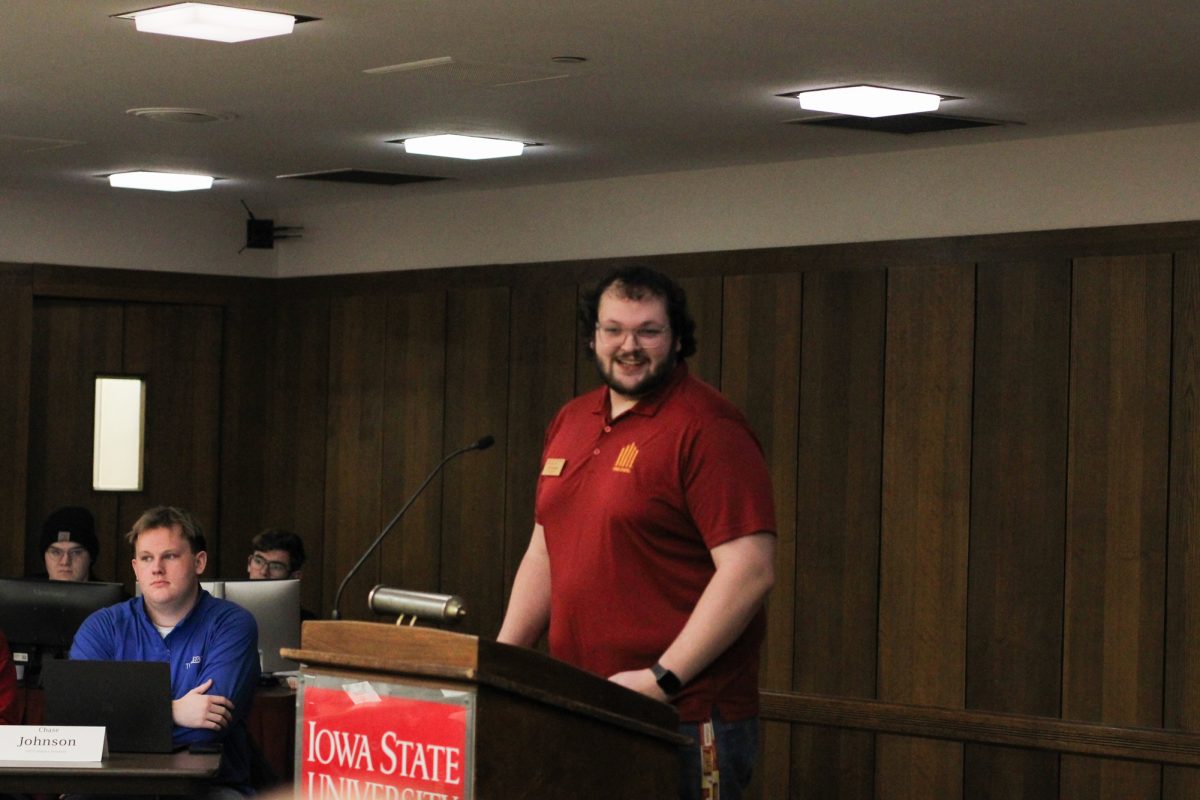The long, strange trip continues
November 21, 1997
They are everywhere. From Tipper Gore to comedian Al Franken to politician William Weld — they represent a diverse and colorful group of people who understand a special language, culture and sound.
They are self-proclaimed Deadheads — the fans of the legendary band, the Grateful Dead.
And, there are a good number of them right here in Ames. Ames has shown itself to be a “kind” town.
People’s Bar and Grill in Campustown hosts Something’s Phishy It’s Dead Night, allowing local cover bands to jam away Thursday nights.
There are three or four specialty shops in town displaying Dead paraphernalia and merchandise.
A simple walk to class often results in spotting numerous backpacks with dancing bears and steal-your-face skull patches, which is good because you can always count on a friendly smile and a hello from a fellow Dead T-shirt-clad student.
And, finding someone to trade Dead tapes with is becoming more and more easy, as more and more members of the Iowa State community get “on the bus.”
For 30 years and more than 2,000 shows, the Grateful Dead has attracted more than 1 million fans who have built an original sub-culture, with a rich lore filled with legends, myths and spirituality.
If you claim membership in this Deadhead community or if you are simply interested in finding out why so many people are devoted to a band, good news is on the way!
The band recently announced plans to open a museum to celebrate and commemorate 30years of Grateful Dead music, culture and spiritual exploration.
The museum will be called Terrapin Station, after the intrepid suite of songs of the same name, and will offer curious people and Deadheads alike a place to “stir the soul and excite the senses,” the band said.
Terrapin Station is set to open “sometime around the millennium.”
In true Grateful Dead fashion, Terrapin Station will be more than just a museum. The band is calling it an “interactive museum, sensory playground and social and cultural laboratory.”
The goal is to create a place where people can “experience a startlingly accurate evocation” of a Grateful Dead concert, from the drum circles and the parking lot bazaar to the “deep-space hyperdrive of a great second set.”
Terrapin Station will feature an interactive exhibition area containing vast collections of Grateful Dead instruments, art and artifacts.
In memory of the late lead guitarist, the museum will include the Jerry Garcia Theater, a versatile space which will be home to multimedia presentations.
Other plans include a rooftop dance garden, a 360-degree sound and light environment called “The Wheel” and an on site library archive with listening stations.
The museum will provide office and display space for some of the non-profit organizations the band has formed or supported over its 30-year history — organizations the Grateful Dead say “make our planet a healthier, saner and more peaceful place.”
The band always believed in giving back to society by generously supporting charities and organizations benefiting music, art, the environment and humanitarian efforts.
Phil Lesh, Grateful Dead bassist, said in a press release that the museum will be “a place to explore and contemplate the broader cultural aspects of the Grateful Dead, the San Francisco scene and the phenomenon of the ’60s.”
Many people thought the death of Jerry Garcia in 1995 would end the notoriously endless touring of the Grateful Dead. While the band has ceased most of its touring, individual band members continue to produce music with side projects and the summer Furthur Festival.
The younger generation of Deadheads need not be disappointed if they were too young to experience the Dead in concert. The Grateful Dead’s long strange trip appears to be continuing into the next millennium.
The creation of the Terrapin Station museum guarantees, as one of their songs says, that the music never stops.
Peace.
Jonquil Wegmann is a senior in community and regional planning from Bellevue.






